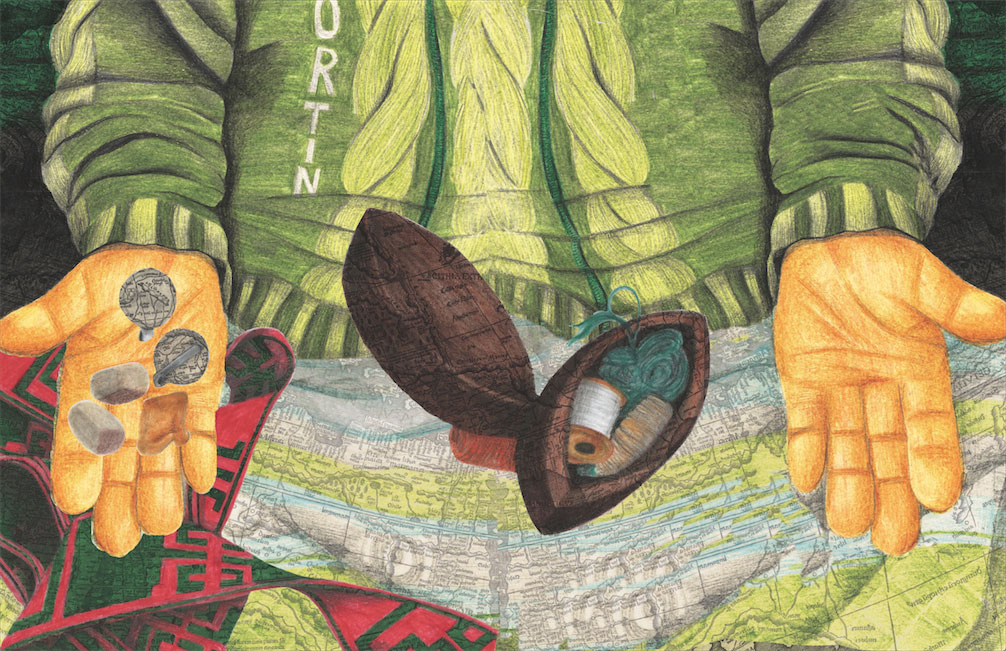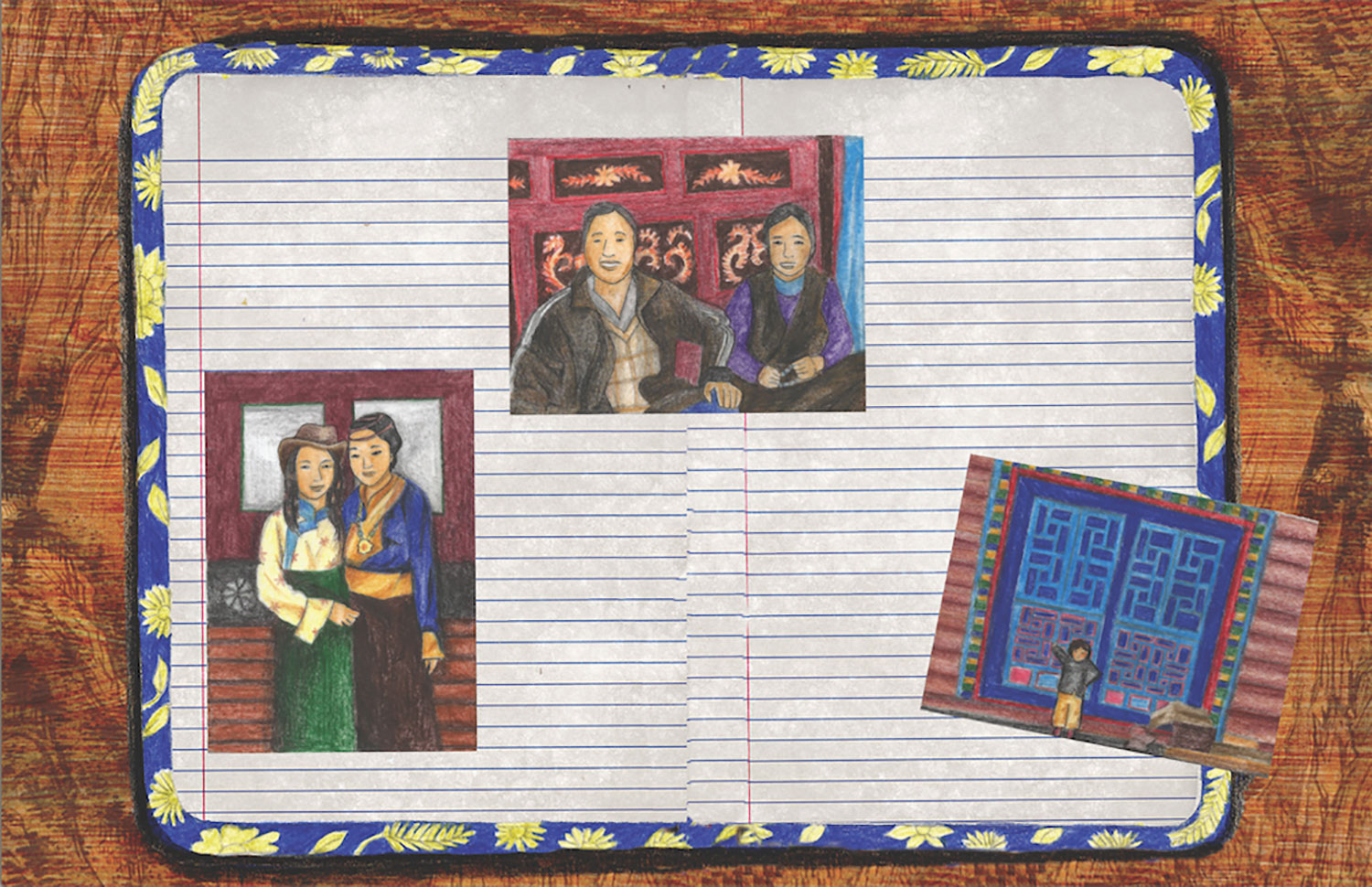PORTRAITS OF EXILE
This series tells the real-life stories of Jampa, Kizom, and Lobdorjee, Tibetan refugees living in Bylakuppe, India. Over the course of a year-long research and creation project, I had the privilege of meeting and collaborating with them. The experience of sharing their stories has profoundly impacted me, and I am deeply grateful for the warmth and generosity of this remarkable community.
Portraits of Exile is a three-part non-fiction illustrated series that experiments with material and form. Combining translucent sheets to evoke intangible memories with regular paper to ground physical realities, the books explore the layered nature of human experience. Perforated models of homes are woven into the narrative, offering moments of pause and symbolizing that home is more than a physical space—it is an emotional and cognitive reality we consciously construct.
An adaptation of Portraits of Exile has been published by Katha, a Delhi-based non-profit. You can learn more about the making of the series in this interview with Ayushree Nandan. You can also read about it in the Alipore Post thanks to Rohini Kejriwal
In 2023, Abinsha Joseph from the Humanities and Social Sciences department at the Indian Institute of Technology wrote a research paper titled Lands that make us: decoding maps, landscapes, and identities in Aaniya Asrani’s Portraits of Exile - you can read it here.
In 2024, Homebound from the series won the prestigious Teacher/Librarian’s Choice Award at the Room to Read India Children’s Literature Awards!
HOMECOMING
Homecoming is the story of an elderly woman named Kizom, who ran away from home at the age of sixteen without telling anyone as she was sure to be dissuaded. In India, she faced many challenges starting afresh, helping in the construction of houses and schools in their newly allocated home. Depicted above - Kizom assumes her family thinks she has been eaten by Yama, the god of death.
HOMELAND
Homeland is the story of a monk named Lobdorjee, who left his home in order to pursue a dream that his mother had for him - to study buddhist philosophy and become a monk, which was only possible away from his home. He talks about his home being shaped by his mothers presence, and the difficulty of leaving her behind, along with the adversities of his new life. Depicted above - Lobdorjee left on the back of a truck with a palmful of Tibetan soil his mother handed to him.
HOMEBOUND
Homebound is the story of a young girl named Jampa, who left her family in Tibet at the age of six, in order to pursue her education at the Tibetan Children's Village where I met her. She recalls her journey away from her parents, travelling with a group of strangers in unfamiliar terrain, to an unknown destination filled with the promise of a better life. Depicted above - A wall in her home where photographs mark a shrine to remember the children studying in India.












